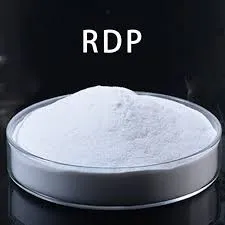
Dec . 07, 2024 14:33 Back to list
hpmc grades
Understanding HPMC Grades A Comprehensive Overview
Hydroxypropyl Methylcellulose (HPMC) is a versatile cellulose ether that has gained popularity across various industries, from pharmaceuticals to food and personal care. Its unique properties, such as water solubility, gel-forming capabilities, and emulsifying attributes, make it an essential ingredient for many formulations. The effectiveness of HPMC in different applications largely depends on its grade, which is determined by factors such as viscosity, molecular weight, and substitution levels. In this article, we will explore the various grades of HPMC and their specific applications.
What is HPMC?
HPMC is a modified cellulose compound that is produced by reacting cellulose with a combination of propylene oxide and methylene chloride. This process enhances the water solubility of cellulose, enabling HPMC to dissolve in hot or cold water. The resultant polymer forms a viscous solution, which can be further employed as a thickener, stabilizer, or film-forming agent.
Grades of HPMC
HPMC is classified into several grades based on their methoxy and hydroxypropyl content, which influences their solubility, viscosity, and overall functionality. Commonly, these grades are denoted by their viscosity and substitution grades, which are crucial for determining their appropriate applications.
1. Low Viscosity Grades These grades, typically around 2000 to 3000 centipoise (cP), are often used in applications requiring lower thickening and stabilizing properties. They are suitable for use in personal care products like lotions and creams, where a lighter texture is desired.
2. Medium Viscosity Grades Ranging from 4000 to 100,000 cP, medium viscosity HPMC is widely used in pharmaceutical formulations as a binding agent, as well as in food products to improve texture and stability. These grades provide a balanced performance, making them versatile for various applications.
hpmc grades

3. High Viscosity Grades With viscosities exceeding 100,000 cP, high viscosity HPMC is essential for applications requiring significant thickening and emulsifying capabilities. This grade is commonly found in construction materials, such as adhesives and mortars, where enhanced water retention and workability are critical.
Applications of HPMC Grades
1. Pharmaceuticals In the pharmaceutical industry, HPMC is predominantly used as a drug delivery agent. It serves as a binder in tablet formulations and a thickener in suspensions. Its ability to form controlled-release matrices makes it invaluable for developing sustained-release drug formulations.
2. Food Industry HPMC is incorporated in various food products, including sauces, dressings, and baked goods, to enhance texture and stability. It acts as a fat replacer, helping to improve mouthfeel while reducing calorie content.
3. Personal Care Products In personal care formulations like shampoos, conditioners, and creams, HPMC improves texture and stability while ensuring a smooth application. Its film-forming properties also enhance product performance.
4. Construction Materials High viscosity grades of HPMC are frequently used in construction applications, where they improve the workability and adhesion of cement-based products. Their water-retention properties ensure extended open times, facilitating better application and finish.
Conclusion
The diverse range of HPMC grades allows for a wide variety of applications across multiple industries. Understanding the specifications and characteristics of each grade is essential for formulators aiming to achieve specific performance outcomes. As demand for sustainable and functional materials continues to grow, HPMC will undoubtedly remain a key player in developing innovative solutions. Whether in pharmaceuticals, food, personal care, or construction, the importance of selecting the appropriate HPMC grade cannot be overstated.
-
Versatile Hpmc Uses in Different Industries
NewsJun.19,2025
-
Redispersible Powder's Role in Enhancing Durability of Construction Products
NewsJun.19,2025
-
Hydroxyethyl Cellulose Applications Driving Green Industrial Processes
NewsJun.19,2025
-
Exploring Different Redispersible Polymer Powder
NewsJun.19,2025
-
Choosing the Right Mortar Bonding Agent
NewsJun.19,2025
-
Applications and Significance of China Hpmc in Modern Industries
NewsJun.19,2025







